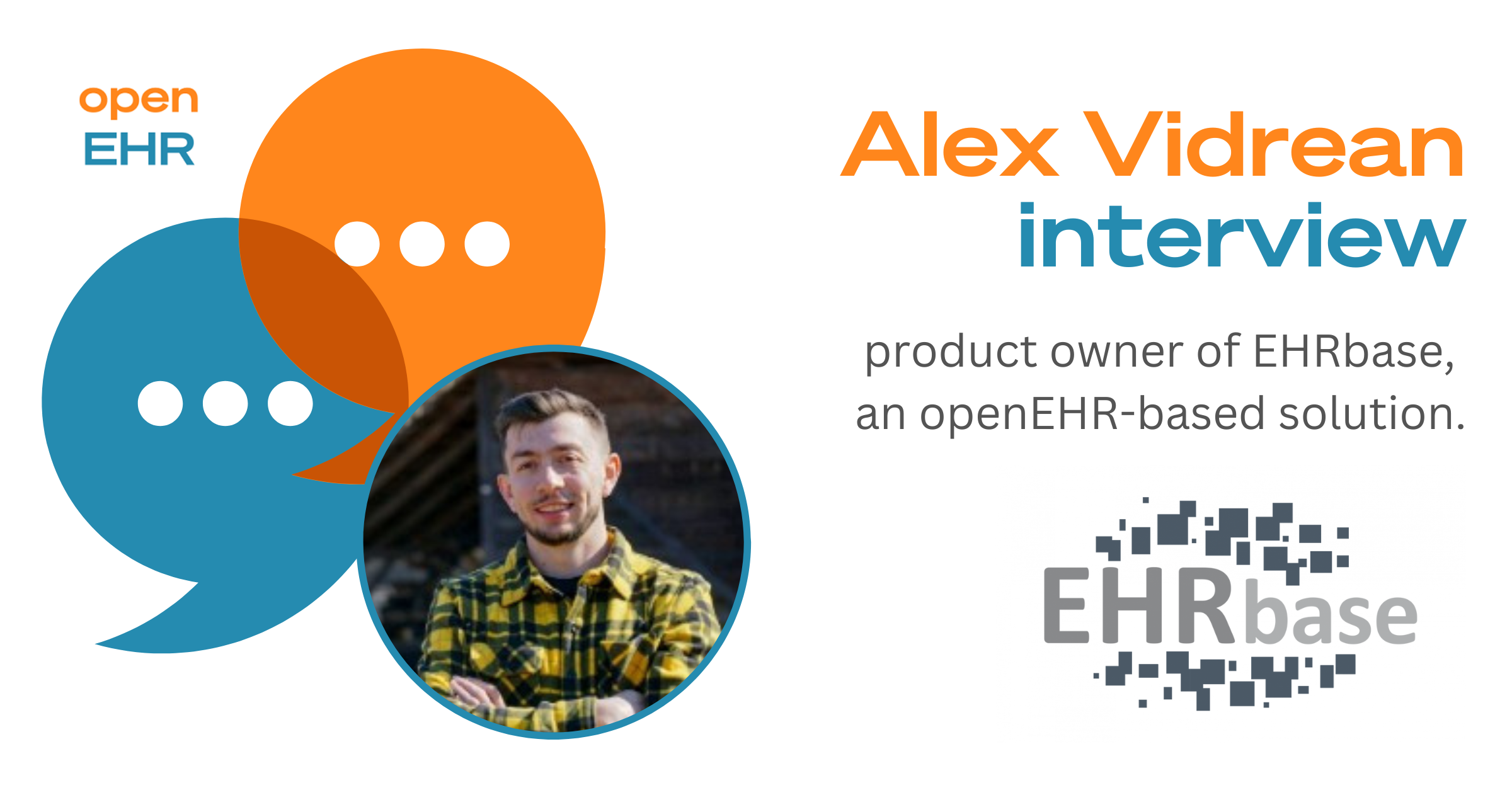My name is Alex Vidrean. Over the last 18 months, I’ve been working on EHRbase, serving as the product owner for the development team. This period also marks the time since I joined the openEHR community.
Based in Romania, I collaborate with the German company vitagroup – a key openEHR industry partner – maintaining EHRbase and providing an advanced enterprise platform centred on this technology, called HIP CDR. For those unfamiliar, EHRbase is an open-source implementation of the openEHR specifications. It serves as the foundation for numerous projects, ranging from small-scale projects to larger, regional, and even national initiatives.
In 2020, EHRbase had its first notable use within a project called NUM Codex, a national research data platform for COVID-19 in Germany. It involves 36 university hospitals and several research institutes and its goal is to provide structured high-quality and pseudonymised data on COVID-19 for the scientific community.
At the centre of it, EHRbase is used for storing and retrieving clinical data. Its Archetype Query Language implementation provides a powerful formalism to flexibly create new queries and thereby ensure efficient adaptation to new information needs. To manage incoming data from hospitals, EHRbase integrates with a FHIR bridge (a common pattern in other deployments as well) thus reliably storing all incoming data in compliance with the FAIR data criteria.
I used this project as an example of EHRbase because it’s the first implementation of EHRbase I got familiar with and it allowed me to understand its potential, but more importantly how it can be leveraged to a nationwide project.
Speaking of leveraging solutions: as part of HIP CDR, EHRbase is also involved in building the unified data platform for the regional health system of Catalonia, which will serve 7.5 million inhabitants and is a joint effort with IBM, RedHat, Yugabyte, HIGHmed, Medblocks, and Kyndryl. In this scenario, HIP CDR enhances EHRbase’s openEHR implementation with mission-critical enterprise features including horizontal scalability using high-performance distributed databases (YugabyteDB), integration with Kafka, full ATNA logging capabilities, and many more.
And of course, through the beauty of open source, there are plenty of “wild” installations of EHRbase that we get to find out about through partnerships, the openEHR discourse forum, or issues on GitHub. They very much showcase the potential for building openEHR based solutions. Either mapping openEHR archetype to OMOP CDMs using OMOCL, building modern healthcare applications using open source software like medblocks-ui, or, in the case of open outcomes, building a comprehensive patient-reported outcomes (PROMs) platform, all get to build on top of the open and feature-rich openEHR server that EHRbase offers.
During the recent openEHR NL Conference we got to chat with some of the people behind the projects and also, show a bit of what’s next for EHRbase. We are convinced that open source is key to promoting and disseminating the open platform paradigm and are super excited for things to come!
So follow us as we’re working to make health data more open and accessible to everyone.
You can find us on: ehrbase.org, GitHub, X (twitter), openEHR discourse

Leave a Reply